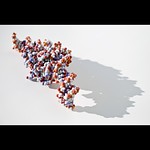The problem is, that strategy doesn't work.
 It reminds me of astronomy classes both in high school and college. Now, astronomy is an awesome and fascinating subject. Go pick up any popular science magazine with an article on astronomy and just check out the language that they use: "Quasar". "Black Hole". "Dark Energy". "Strange Planet". It's like the whole subject was created just to appeal to teenagers. There is a podcast dedicated to astronomy called AstronomyCast that goes over a lot of this stuff, and my eleven-year-old son cannot go to sleep at night without listening to at least a few episodes.
It reminds me of astronomy classes both in high school and college. Now, astronomy is an awesome and fascinating subject. Go pick up any popular science magazine with an article on astronomy and just check out the language that they use: "Quasar". "Black Hole". "Dark Energy". "Strange Planet". It's like the whole subject was created just to appeal to teenagers. There is a podcast dedicated to astronomy called AstronomyCast that goes over a lot of this stuff, and my eleven-year-old son cannot go to sleep at night without listening to at least a few episodes.But I hope that the interest isn't torn out of him in high school. If his courses are anything like mine, they will discuss: Stonehenge. Galileo. How, if you stay up night after night, you can see the position of the planets change slightly in relation to the stars. How an optical telescope works.
“Students know what the cool stuff is.”
This isn't the cool stuff. Students know what the cool stuff is. If they don't listen to AstronomyCast, they've probably seen episodes of Nova, or at the very least, played a videogame in which black holes or wormholes play an integral part.Genetics is just the same. Engage the student's interest by hitting them with the cool stuff first. Don't try to emulate the thinking of Mendel, because the instruments and techniques we use today are so much more powerful than Mendel ever dreamed of, and students know that, and often know what the techniques are. Redfield suggests starting with personal genomics, which seems like a good plan. Students, who know that they have a unique genetic makeup, should be interested in knowing what that makeup is, or at least how to find out. This would lead directly to the ethical questions surrounding that knowledge, and the course is off and running. Redfield is on to something.
